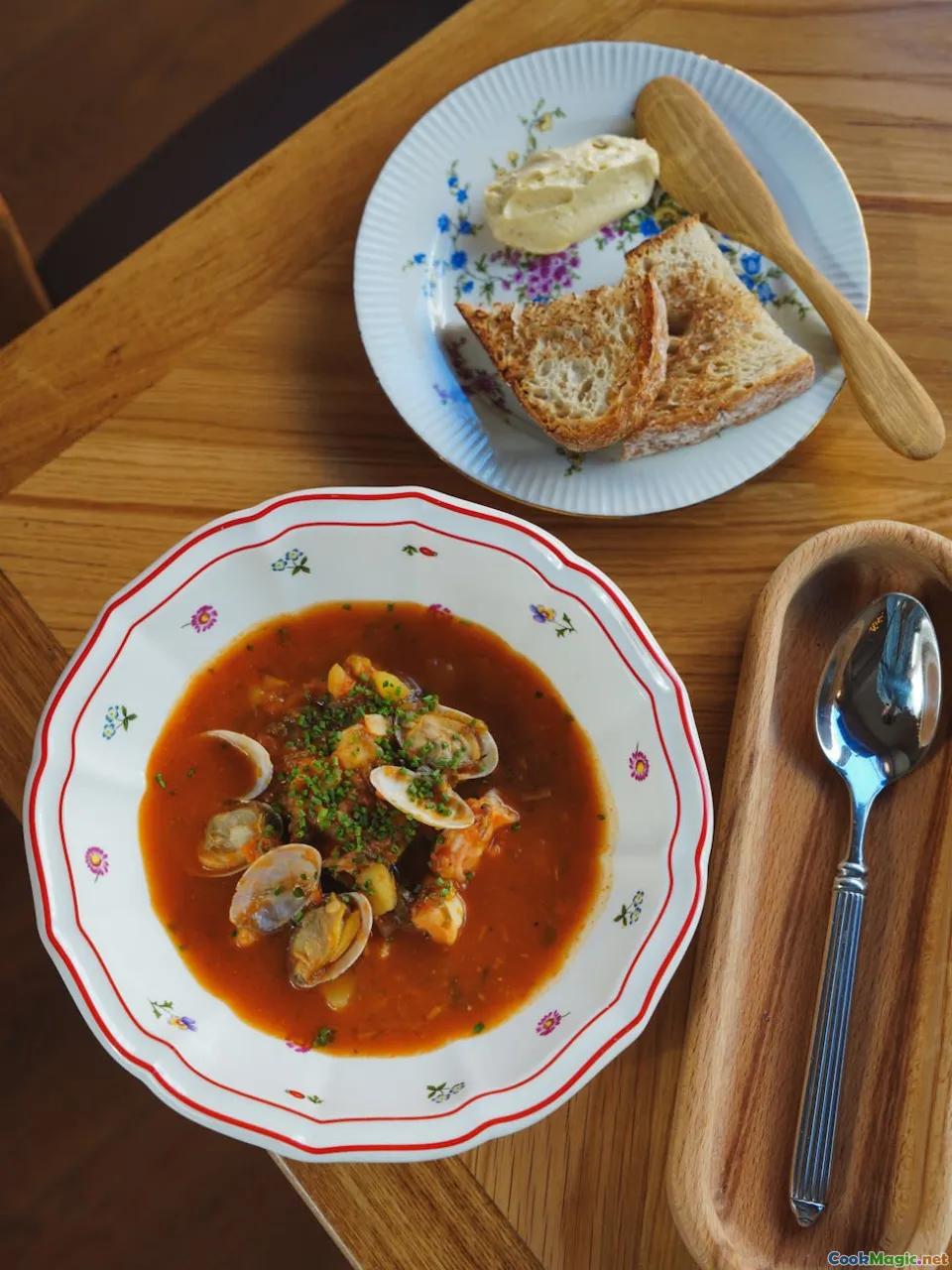Reimagining Halaszle Hungarian Fishermans Soup
8 min read A deep dive into reinventing Halaszle, blending tradition with innovation to celebrate Hungary's beloved fisherman's soup in new and exciting ways. May 20, 2025 12:00
Reimagining Halaszle: Hungarian Fisherman's Soup
In the rolling waters of the Danube and the Tisza, fishermen have crafted a culinary masterpiece for centuries—Halaszle. This iconic Hungarian fisherman's soup is not just a dish; it’s a soulful expression of Hungary’s rich maritime heritage, rooted in humble origins yet bursting with flavors that evoke the very essence of the river and its bounty.
Introduction: Beyond Tradition, Into Innovation
Imagine sitting at a rustic riverside tavern in Budapest or Szeged, the air thick with the aroma of smoked fish and paprika. The sizzle of fresh catch hitting a hot skillet, the murmur of Hungarian folk tunes in the background—Halaszle is more than just a soup; it’s an experience, a connection to the land, water, and people.
Yet, as culinary borders blur and palates evolve, the question arises: how can we honor this traditional Hungarian staple while reimagining it for modern tastes? This article embarks on a flavorful journey—combining history, personal insights, and innovative techniques—to reinvent Halaszle without losing its soul.
The Cultural and Historical Roots of Halaszle
Origins of a Fisherman's Treasure
Halaszle, translating literally to "fisherman's soup," dates back centuries to the fishing communities along Hungary's rivers and lakes. Originally a humble, hearty dish, it was crafted with whatever fresh fish was available—catfish, carp, perch—cooked swiftly over open fires, seasoned simply with salt, onions, and a dash of paprika.
The Role of Paprika and Spices
Paprika, now synonymous with Hungarian cuisine, became a defining ingredient in the 19th century, transforming Halaszle into a vibrant, aromatic broth. This spice not only added color but also a smoky sweetness that elevated the dish from basic sustenance to a regional delicacy.
A Symbol of Heritage
Halaszle embodies the resilience and resourcefulness of Hungarian fishermen, who relied on the river's generosity. It’s a dish woven into festivals, family gatherings, and national identity—an edible testament to a maritime history often overshadowed by landlocked perceptions.
Sensory Journey Through Classic Halaszle
Visual Appeal
Picture a steaming bowl of fiery red-orange broth, flecks of paprika shimmering on the surface, chunks of fresh fish, and a garnish of fresh parsley. The richness of the broth is contrasted by the simplicity of its ingredients, inviting anticipation.
Aromatic Allure
The first inhale is intoxicating—smoky paprika, earthy onions, and the subtle scent of fresh fish. The aroma alone transports you to a Hungarian fishing village at dawn.
Texture and Taste
The broth is velvety yet robust, coating tender pieces of fish that melt in your mouth. The onions add a slight sweetness, balancing the smoky spice of paprika. Traditionally served with crusty bread or fresh baguette, it’s a harmonious symphony of textures.
The Challenge and Opportunity of Reimagination
While traditional Halaszle is a beloved classic, modern culinary trends encourage us to explore new frontiers—sustainability, global influences, dietary preferences—without sacrificing authenticity.
Sustainability and Local Sourcing
Innovating Halaszle starts with choosing sustainable fish varieties—trout, sustainable perch, or even plant-based alternatives—aligning tradition with environmental consciousness.
Elevating Visual and Textural Elements
Introducing elements like edible flowers, microgreens, or smoky infused oils can enhance visual appeal. Texturally, adding elements like roasted vegetables, foam, or even a hint of cream can create a new sensory experience.
Flavor Innovations
While paprika remains central, experimenting with other spices—smoked chipotle, saffron, or even sumac—can add depth and modernity. Incorporating aromatic herbs like dill, tarragon, or lemongrass offers fresh twists.
Creative Reinterpretations of Halaszle
The Fusion Bowl
Imagine a bowl where traditional broth is enriched with coconut milk, giving it a subtle sweetness and creaminess. Topped with grilled fish fillets, microgreens, and a drizzle of chili oil for heat—creating a harmony of Hungarian and Southeast Asian flavors.
The Vegetarian Version
Replacing fish with hearty mushrooms—such as shiitake or king oyster—sautéed with smoked paprika, garlic, and onions, simmered in vegetable broth. Garnished with fresh dill and lemon zest, this version celebrates the dish’s soul without seafood.
The Deconstructed Approach
Serving the components separately—smoked fish, paprika-infused broth, grilled vegetables—allows diners to customize each bite, engaging more actively with the flavors and textures.
Personal Reflections and Culinary Adventures
During a recent culinary trip to Hungary, I spent mornings on the banks of Lake Balaton, watching fishermen prepare their daily catch. Their stories, filled with respect for tradition yet openness to innovation, inspired me to think about how Halaszle can evolve.
One memorable experience involved a local chef who infused his Halaszle with a hint of saffron and served it alongside homemade sourdough bread and pickled vegetables—an elevated yet authentic presentation.
This journey reinforced my belief that reimagining traditional dishes is about respecting their roots while daring to explore new horizons.
Final Thoughts: Celebrating the Future of Halaszle
Reimagining Halaszle is not about rewriting history but about expanding its narrative. It’s an invitation to chefs, home cooks, and food lovers to honor the past while embracing innovation.
By blending traditional techniques with modern culinary artistry—integrating sustainable practices, global flavors, and creative presentation—we breathe new life into a beloved Hungarian icon.
Halaszle’s story is far from over; it’s an evolving tale told through each new bowl, each new taste, each new generation inspired by the river’s eternal song.
Whether you stick to classic recipes or venture into inventive realms, one thing remains true: Halaszle is more than a soup—it’s a celebration of Hungary’s soul, a testament to resilience, and a delicious canvas for culinary creativity.
Call to Action
I invite you, dear reader, to experiment with your own versions of Halaszle. Whether you incorporate different spices, swap fish for vegetables, or serve it in a contemporary presentation, remember that at its heart, this dish is about honoring tradition while daring to innovate.
Let each spoonful tell a story—of water, land, history, and the future. Cheers to reimagining Hungarian cuisine, one bowl at a time!









